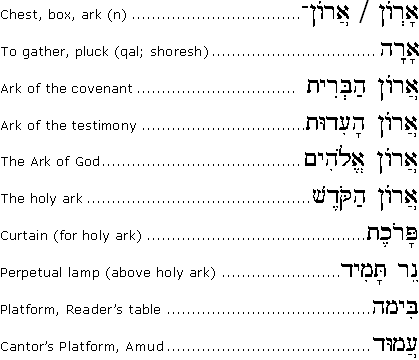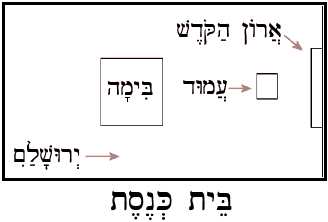|
|
|||||||||||||||||||||
 |
|||||||||||||||||||||
|
Learn Hebrew |
|||||||||||||||||||||
|
Hebrew Word of the Week |
|||||||||||||||||||
|
Aron - Chest, Box, Ark |
|||||||||||||||||||
 |
|||||||||||||||||||
 |
|||||||||||||||||||
|
In the Scriptures, the ark was originally a golden chest designed to reside in the innermost chamber of the mishkan (tabernacle) and then later in the bet hamikdash (temple). This inner chamber was called the "Holy of Holies." Inside the ark itself (sometimes called the ark of the covenant, the ark of the testimony, or simply the ark of God) were three things: the tablets with the Ten Commandments, Aaron's rod that budded, and some manna (Heb. 9:4). On top of the ark was the kapporet (mercy seat) where during Yom Kippur the kohen gadol (high priest) would sprinkle blood between the outstretched wings of the cherubim to make atonement for the sins of the people. |
|||||||||||||||||||
 |
|||||||||||||||||||
|
|
|||||||||||||||||||
|
Hebrew for Christians |
|||||||||||||||||||
|
|||||||||||||||||||